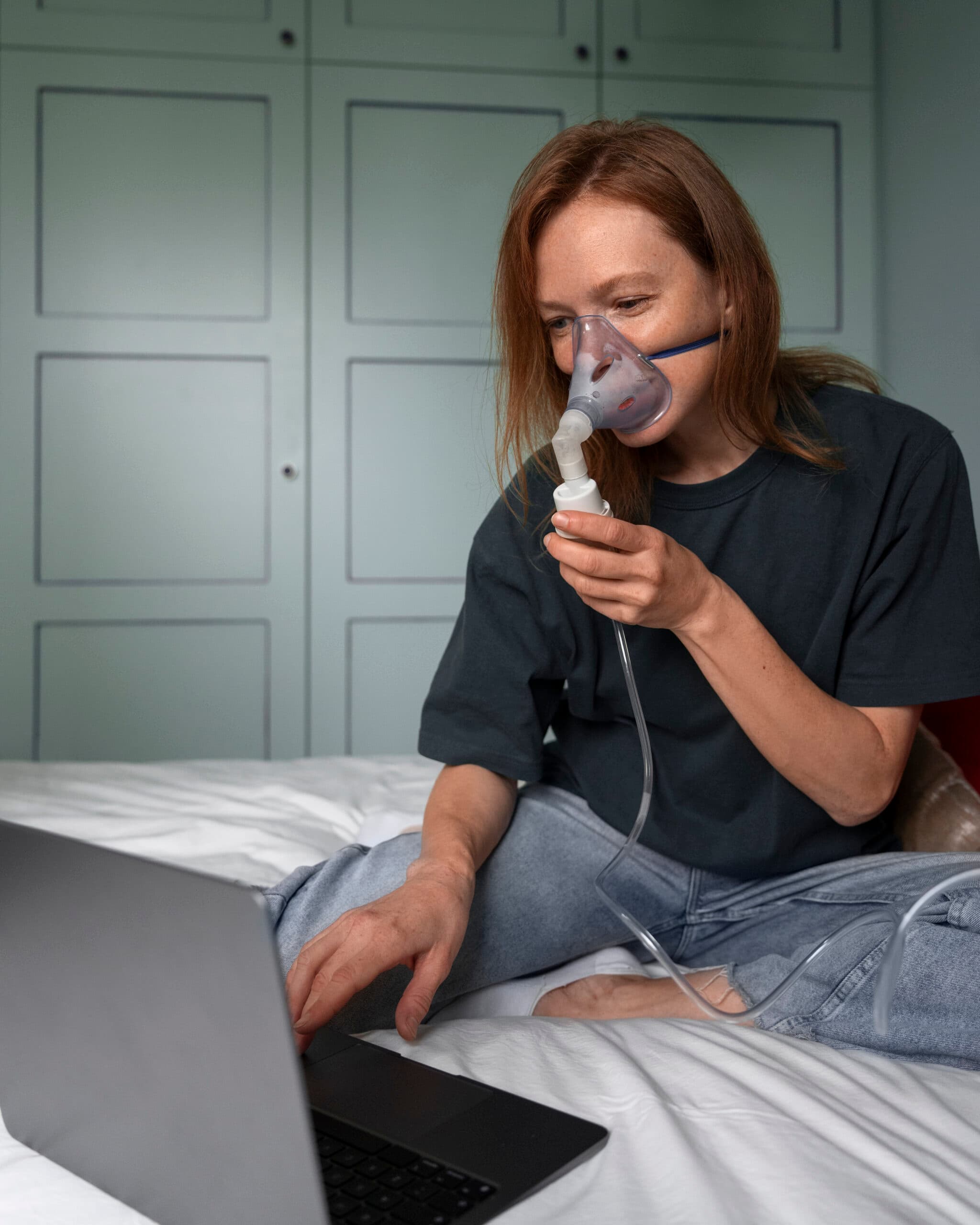

Learning how to use CPAP Machines When You’re suffering from Sinus Issues can help you enhance your overall health. We all know that a CPAP machine (Continuous Positive Airway Pressure) is a game-changer for those who are suffering from sleep apnea, as it not only improves health but also plays a significant role in enhancing sleep quality. There is no doubt that this machine is built to show exceptional performance.
However, some people have concerns about what really happens when you’re hit with sinus issues like congestion or chronic sinusitis. Does this machine make this condition better, or does it steady flow of pressurized air is a burden?
Well, unfortunately, Sinus congestion and CPAP don’t go well together. The main reason behind that is that the nasal passages are already blocked or inflamed, and using a CPAP mask during that condition can become uncomfortable and frustrating. Many people tend to skip their therapy due to the immense level of discomfort they are experiencing. Although CPAP therapy is something that cannot be neglected, as it is crucial, especially for those who are dealing with severe conditions. By skipping CPAP therapy, a patient is exposed to risks like worsening sleep apnea symptoms, like daytime fatigue, irritability, and long-term cardiovascular risks.
The good news? Now you don’t have to struggle choosing between breathing comfortably and sticking with your treatment. With the right approach, tools, and adjustments, you can make CPAP therapy more tolerable and can enhance a comfortable experience even when dealing with sinus problems.
Let us discover how to use CPAP Machines
A CPAP machine delivers a steady flow of air that plays a crucial role in treating obstructive sleep apnea by preventing airway collapse. But when your sinuses are already blocked, using a CPAP machine can be an issue for many people, as this airflow can lead to:
That’s why it’s crucial to adapt your therapy and look for another alternative that can assist you when you experience nasal congestion with CPAP.

The following are the options that you can opt for:
Tip: If you’re struggling with sinus congestion regularly, a full face mask is often the most suitable option.
CPAP humidifier benefits greatly during sinus issues. Dry air coming from a CPAP machine can irritate the user as they are already dealing with inflamed nasal passages and worsened congestion. A heated humidifier adds warm moisture to the air, which assists in:
If you are currently dealing with a situation like this, then make sure your CPAP machine has a heated humidification feature, and adjust the setting to a comfortable level.
Using a saline nasal spray before putting on your mask can help you cope with this situation in a better way. This simple yet effective solution helps clear your nasal passages and reduces swelling, making breathing easier.
Here’s how to use it properly:
This simple routine can play a significant role in reducing nasal congestion with CPAP and enhancing mask comfort.
Some settings to consider:
Never make drastic changes to your CPAP machine without considering professional guidance.
If you are struggling persistently with breathing issues, which are also impacting your sleep quality, then it is best to talk to your sleep specialist to find the best solution.
When dealing with infections or allergies, it becomes more important to pay attention to keeping your CPAP gear hygienic to prevent major health risks.
Be regular about cleaning your CPAP mask, tubing, and humidifier chamber daily or at least a few times a week, as it prevents the buildup of bacteria, allergens, and irritants. By just being careful about cleaning and hygiene, you can prevent major health risks like re-infection or worsening sinus issues.
Use gentle soap, warm water for cleaning CPAP equipment. Make sure to air-dry them completely before reassembling.
Your sleeping position can play a contributing role in either worsening or relieving sinus pressure.
Try this:
Pairing proper posture with the right mask and humidification can significantly improve comfort during therapy.
If you’re looking to purchase the best CPAP machine in Pakistan, trust CPAP Pakistan for reliable, premium products. Visit cpappakistan.pk today to explore their full range and order with confidence.
We offer 24/7 delivery of oxygen concentrators, CPAP/BiPAP machines, and hospital beds.
Emergency delivery available anytime
Quick setup and installation
Get professional advice and support.